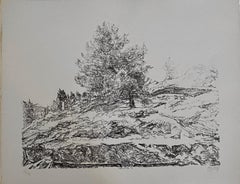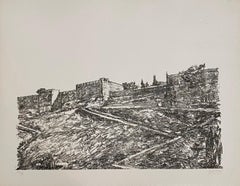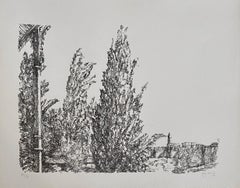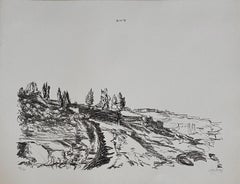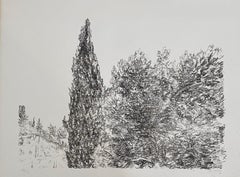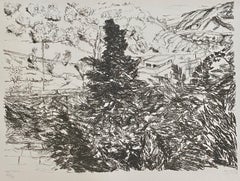Lions Gallery Drawings and Watercolor Paintings
1970s Modern Landscape Drawings and Watercolors
Lithograph
1970s Modern Landscape Drawings and Watercolors
Lithograph
1970s Modern Landscape Drawings and Watercolors
Lithograph
1970s Modern Landscape Drawings and Watercolors
Lithograph
1970s Modern Landscape Drawings and Watercolors
Lithograph
1970s Modern Landscape Drawings and Watercolors
Lithograph
1950s Expressionist Figurative Drawings and Watercolors
Woodcut
1950s American Modern More Art
Paper, Ink
1950s American Realist More Art
Paper, Ink
1950s American Modern More Art
Paper, Ink
1950s American Modern More Art
Paper, Ink
1950s American Modern More Art
Paper, Ink
1950s American Modern More Art
Paper, Ink
1950s American Realist More Art
Paper, Ink
1950s American Modern More Art
Paper, Ink
1950s American Modern More Art
Paper, Ink
Mid-20th Century Modern Still-life Drawings and Watercolors
Archival Ink, Watercolor
Mid-20th Century Modern Figurative Drawings and Watercolors
Paper, Ink
20th Century American Modern Drawings and Watercolor Paintings
India Ink, Archival Paper
2010s Street Art Abstract Drawings and Watercolors
Mixed Media, Watercolor, Permanent Marker
20th Century American Modern Drawings and Watercolor Paintings
Archival Ink, Archival Paper
20th Century American Modern Drawings and Watercolor Paintings
Paper, India Ink
20th Century Modern Portrait Drawings and Watercolors
Ink, Watercolor
Mid-20th Century Landscape Drawings and Watercolors
Watercolor, Gouache
20th Century Post-Modern Figurative Paintings
Paper, Oil Crayon, Mixed Media, Watercolor
20th Century Post-Modern Figurative Paintings
Paper, Oil Crayon, Mixed Media, Watercolor
20th Century Post-Modern Figurative Paintings
Paper, Oil Crayon, Mixed Media, Watercolor
1970s Abstract Expressionist Abstract Paintings
Watercolor, Gouache
Mid-20th Century American Modern Figurative Drawings and Watercolors
Paper, Conté, Crayon
20th Century Abstract Expressionist Abstract Drawings and Watercolors
Paper, Charcoal, Watercolor, Gouache
1980s Pop Art Abstract Drawings and Watercolors
Paper, Watercolor, Gouache
1960s Modern Figurative Drawings and Watercolors
Paper, Ink, Pen
1960s Modern Figurative Drawings and Watercolors
Pen
1960s Modern Animal Drawings and Watercolors
Pen
1960s Modern Figurative Drawings and Watercolors
Watercolor, Pen
20th Century Post-Impressionist Landscape Paintings
Watercolor, Gouache
Mid-20th Century Expressionist Figurative Drawings and Watercolors
Watercolor, Gouache
Mid-20th Century Abstract Expressionist Abstract Paintings
Paper, Gouache
1960s Abstract Expressionist Abstract Drawings and Watercolors
Paper, Oil Pastel
Late 20th Century Conceptual Mixed Media
Paper, Film, Graphite, Pigment
1960s Modern Figurative Drawings and Watercolors
Paper, Ink
1970s Surrealist Animal Drawings and Watercolors
Ink, Watercolor
1980s Abstract Expressionist Mixed Media
Mixed Media, Handmade Paper, Monoprint
Mid-20th Century Expressionist Abstract Drawings and Watercolors
Paper, Watercolor
20th Century Modern Landscape Paintings
Gouache
Mid-20th Century American Modern Nude Drawings and Watercolors
Paper, Charcoal
Mid-20th Century Expressionist Abstract Drawings and Watercolors
Paper, Watercolor
21st Century and Contemporary Pop Art Landscape Drawings and Watercolors
Pastel, Archival Paper
1960s Modern Animal Drawings and Watercolors
Lithograph, Offset
1940s American Modern Figurative Paintings
Watercolor, Gouache
1980s Abstract Expressionist Abstract Drawings and Watercolors
Watercolor, Woodcut
1980s Abstract Abstract Drawings and Watercolors
Chalk, Charcoal
1970s Modern Figurative Drawings and Watercolors
Paper, Pencil
Early 20th Century Modern Figurative Paintings
Paper, Charcoal, Pastel, Watercolor, Gouache
1950s Modern Abstract Drawings and Watercolors
Watercolor
Mid-20th Century Modern Figurative Paintings
Paper, Gouache
20th Century Figurative Drawings and Watercolors
Watercolor
1970s Abstract Drawings and Watercolors
Paper, Pencil, Color Pencil
1990s Contemporary Figurative Drawings and Watercolors
Paper, Pastel, Pencil
1980s Contemporary Figurative Drawings and Watercolors
Paper, Pencil
